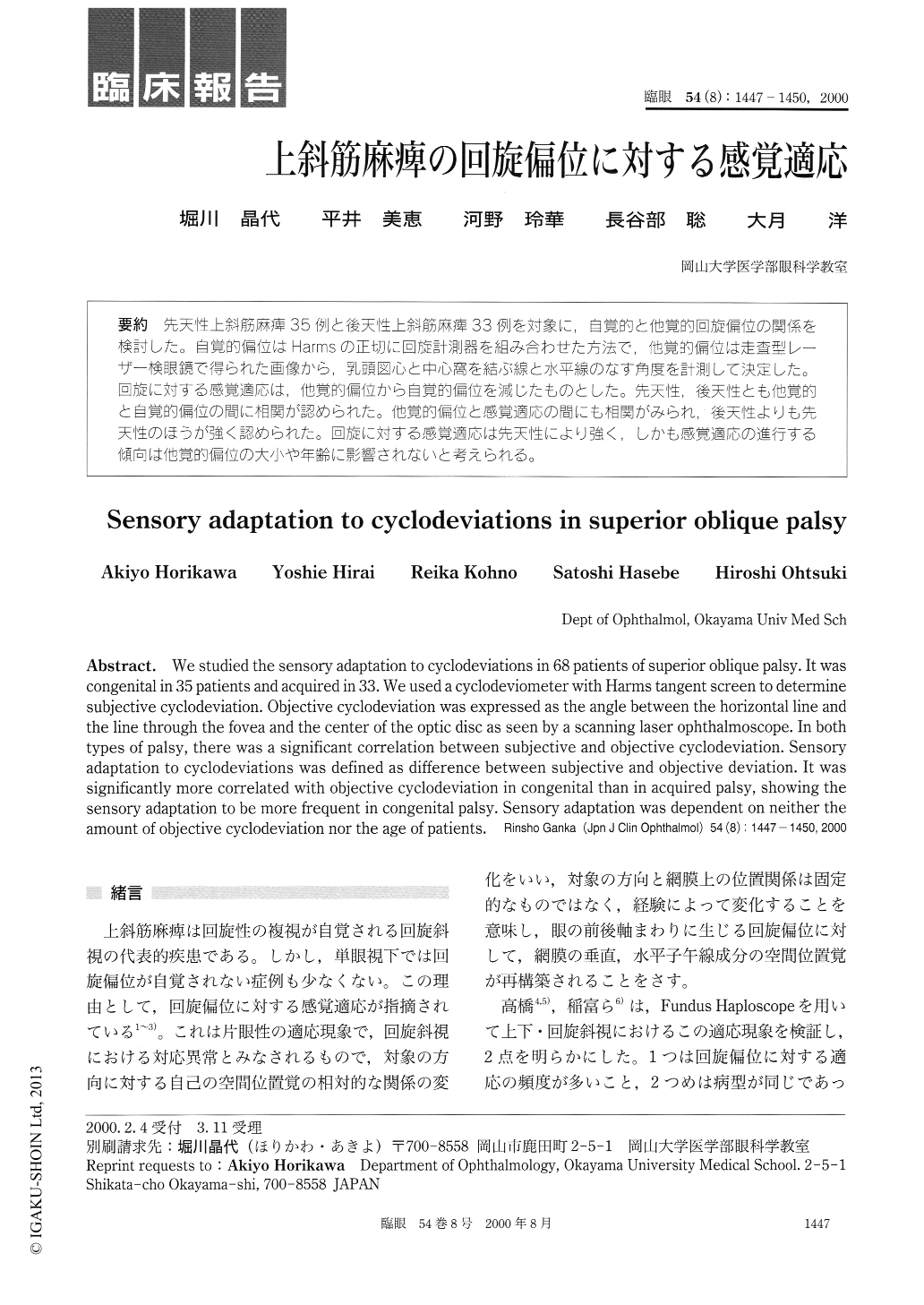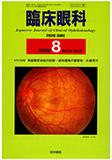Japanese
English
- 有料閲覧
- Abstract 文献概要
- 1ページ目 Look Inside
先天性上斜筋麻痺35例と後天性上斜筋麻痺33例を対象に,自覚的と他覚的回旋偏位の関係を検討した。自覚的偏位はHarmsの正切に回旋計測器を組み合わせた方法で,他覚的偏位は走査型レーザー検眼鏡で得られた画像から,乳頭図心と中心窩を結ぶ線と水平線のなす角度を計測して決定した。回旋に対する感覚適応は,他覚的偏位から自覚的偏位を減じたものとした。先天性,後天性とも他覚的と自覚的偏位の間に相関が認められた。他覚的偏位と感覚適応の間にも相関がみられ,後天性よりも先天性のほうが強く認められた。回旋に対する感覚適応は先天性により強く,しかも感覚適応の進行する傾向は他覚的偏位の大小や年齢に影響されないと考えられる。
We studied the sensory adaptation to cyclodeviations in 68 patients of superior oblique palsy. It was congenital in 35 patients and acquired in 33. We used a cyclodeviometer with Harms tangent screen to determine subjective cyclodeviation. Objective cyclodeviation was expressed as the angle between the horizontal line and the line through the fovea and the center of the optic disc as seen by a scanning laser ophthalmoscope. In both types of palsy, there was a significant correlation between subjective and objective cyclodeviation. Sensory adaptation to cyclodeviations was defined as difference between subjective and objective deviation. It was significantly more correlated with objective cyclodeviation in congenital than in acquired palsy, showing the sensory adaptation to be more frequent in congenital palsy. Sensory adaptation was dependent on neither the amount of objective cyclodeviation nor the age of patients.

Copyright © 2000, Igaku-Shoin Ltd. All rights reserved.


